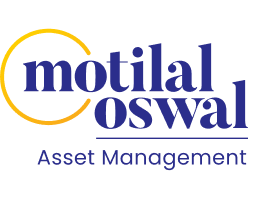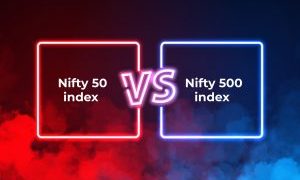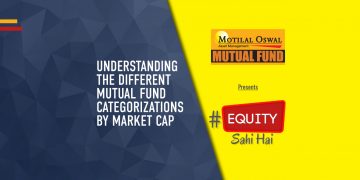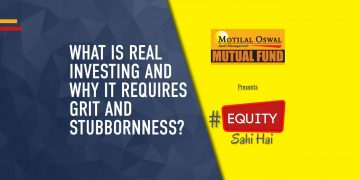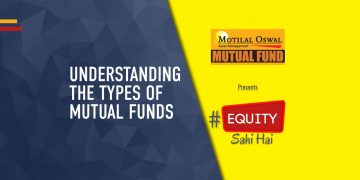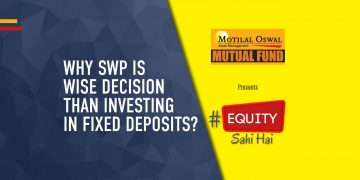Looking to understand balanced advantage funds? Here is all you need to know about balanced funds, how they work & who should invest in them.
For diversification, most investors prefer to invest in equity and debt. What if you had the option to get the benefits of equity and debt in a single mutual fund scheme? Yes, that is what balanced advantage funds provide you. In this article, we will understand how to invest in balanced funds.
What is a balanced advantage fund?
The market regulator, Securities and Exchange Board of India (SEBI), has categorized balanced advantage funds under hybrid funds. A balanced advantage fund (BAF) is an open-ended dynamic asset allocation fund that invests in equity and debt and manages their proportion dynamically. A BAF is also known as a dynamic asset allocation fund.
Why choose a balanced advantage fund?
An investor should choose a balanced fund to benefit from equity and debt asset classes in a single mutual fund scheme. Equity carries high risk but also has the potential to give inflation-beating high returns. Thus, equity can create wealth for an investor. Debt lends stability to an investor’s portfolio. When equity markets fall sharply, the debt portion of the portfolio cushions the overall impact on the investment portfolio.
Balanced funds provide the benefits of both (equity and debt) in a single scheme. The fund manager manages equity and debt allocation dynamically, based on certain parameters such as the P/E ratio, P/B ratio, or other pre-set criteria.
How does a balanced advantage fund work?
As mentioned earlier, a balanced advantage fund works by dynamically managing the equity and debt portion of the fund portfolio. Let us understand how it happens. The fund manager may have taken equity, and debt composition in the, let’s say 60:40 proportion. During the year, let us assume that the equity markets see a huge rally leading to the equity to debt proportion changing to 80:20. During such times, the fund manager does the rebalancing act. They sell equities, invest the sale proceeds in debt, and bring the equity to debt proportion back to 60:40.
Similarly, when the equity markets see a massive correction during any particular year, the equity to debt proportion may reverse to say 40:60. During such times, the fund manager does the rebalancing act once again. They will sell debt securities, invest the sale proceeds in equity, and bring the equity to debt proportion back to 60:40.
Advantages of a balanced advantage fund
Some of the advantages of a balanced advantage fund include:
- Exposure to equity and debt through a single scheme: The biggest advantage of a balanced advantage fund is that it provides exposure to equity and debt asset classes through a single mutual fund scheme.
- Dynamic asset allocation: A balanced advantage fund provides exposure to equity and debt and manages their proportion dynamically based on market conditions.
- Tax implications: While managing the proportion of equity and debt in the scheme portfolio, the fund manager may have to sell one asset class and buy another asset class frequently. Since these buy and sell transactions are being done through the mutual fund portfolio, there are no tax implications for the scheme unitholders. However, if an individual does such transactions of selling one asset class and buying another, there may be capital gain implications.
Things to know before investing in a balanced advantage fund
While investing in a balanced advantage fund, please note that some portion of the scheme money is allocated to debt securities. Due to this, a balanced advantage fund may underperform a pure equity fund during bull markets. You should check the equity composition of the fund. If the equity component is a minimum of 65% at all times, then it will be treated as an equity fund for taxation purposes.
Who should invest in a balanced advantage fund?
As an investor, if you have any of the following requirements, you should invest in a balanced advantage fund:
- You are looking for an investment product that is more aggressive than a pure debt mutual fund.
- You expect inflation-beating high returns when equity markets are doing well but want to limit your losses when equity markets fall.
- You want to diversify your investment portfolio into equity and debt and let the expert fund manager rebalance the proportion of equity and debt based on market conditions.
- You are a first-time investor looking for a good long-term investment option for creating wealth for fulfilling your financial goals.
Conclusion
A balanced advantage fund provides you exposure to equity and debt through a single mutual fund scheme. An expert fund manager rebalances the proportion of equity and debt based on market conditions. There are no capital gain implications for the portfolio reshuffling done by the fund manager within the balanced fund scheme portfolio. With so many benefits, a balanced mutual fund is one of the best mutual fund schemes you can invest in.
Disclaimer: This blog has been issued on the basis of internal data, publicly available information and other sources believed to be reliable. The information contained in this document is for general purposes only and not a complete disclosure of every material fact. The information/data herein alone is not sufficient and shouldn’t be used for the development or implementation of an investment strategy. It should not be construed as investment advice to any party. All opinions, figures, estimates and data included in this blog are as on date. The blog does not warrant the completeness or accuracy of the information and disclaims all liabilities, losses and damages arising out of the use of this information. The statements contained herein may include statements of future expectations and other forward-looking statements that are based on our current views and assumptions and involve known and unknown risks and uncertainties that could cause actual results, performance or events to differ materially from those expressed or implied in such statements. Readers shall be fully responsible/liable for any decision taken on the basis of this article.
Mutual Fund investments are subject to market risks, read all scheme related documents carefully.
